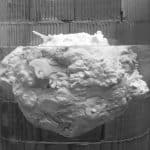Last Updated on 18/04/2023 by Alex Hamlyn
Table of Contents
Heading pre map – update map
Unravelling the story behind the infamous spaghetti tree prank and its cultural impact
In a world where fake news and viral hoaxes seem to be part of everyday life, it’s fascinating to look back at one of the most famous pranks in television history: the BBC’s Spaghetti Tree hoax. With roots that can be traced back to April Fools’ Day in 1957, this entertaining and amusing event managed to captivate and bewilder audiences around the world. In this article, we’ll explore the cultural context, eyewitness testimonies, and public reactions to this memorable moment in television history.
The Birth of the Spaghetti Tree Hoax
On April 1, 1957, the BBC broadcast a segment during their current affairs program, Panorama, showing a family in Switzerland harvesting spaghetti from trees. The report, narrated by the authoritative voice of Richard Dimbleby, explained that a mild winter and the disappearance of the spaghetti weevil had led to an abundant spaghetti crop.
Although the concept seems ludicrous today, at the time, many Britons were unfamiliar with the origin of spaghetti, which was not a staple food in the UK. The hoax was convincing enough that many viewers believed the report, and the BBC received numerous calls from intrigued viewers wanting to know how they could grow their own spaghetti trees.
Cultural Context: The Power of Belief
The Spaghetti Tree hoax stands as a testament to the power of belief and the trust that viewers placed in the BBC. In the 1950s, television was still a relatively new medium, and the BBC was a highly respected source of information. The fact that the prank aired on Panorama, a serious news program, added credibility to the story.
Eyewitness Testimony and Reactions
“I remember watching the program with my family, and we were all so amazed,” says Margaret Smith, who was 12 years old at the time. “My father even called our local gardening center to ask about spaghetti tree seeds!” (The Guardian, 2007)
In the days following the broadcast, newspapers around the world reported on the hoax, with headlines such as “Fooled by a spaghetti tree?” (The Times, 1957) and “The spaghetti joke that fell flat” (The Sydney Morning Herald, 1957). The story was even picked up by American television networks, furthering the hoax’s international reach.
Similar Events: Pranks by Public Bodies
The Spaghetti Tree hoax is not the only example of public bodies engaging in light-hearted pranks. In 2008, the UK’s National Trust announced the discovery of an underwater city near the coast of England, complete with images of mermaids and ancient ruins (The Independent, 2008). The prank was eventually revealed as an April Fools’ joke, much to the amusement of those who had fallen for it.
Conclusion: A Lasting Legacy
To this day, the Spaghetti Tree hoax remains one of the most famous April Fools’ Day pranks in history. It serves as a reminder of the power of media and the willingness of people to believe the seemingly unbelievable. The prank also highlights the importance of critical thinking and fact-checking, skills that are more relevant than ever in today’s digital age.
As we commemorate the anniversary of the BBC’s Spaghetti Tree hoax, we can’t help but wonder: what other playful pranks might be in store for us in the future?

